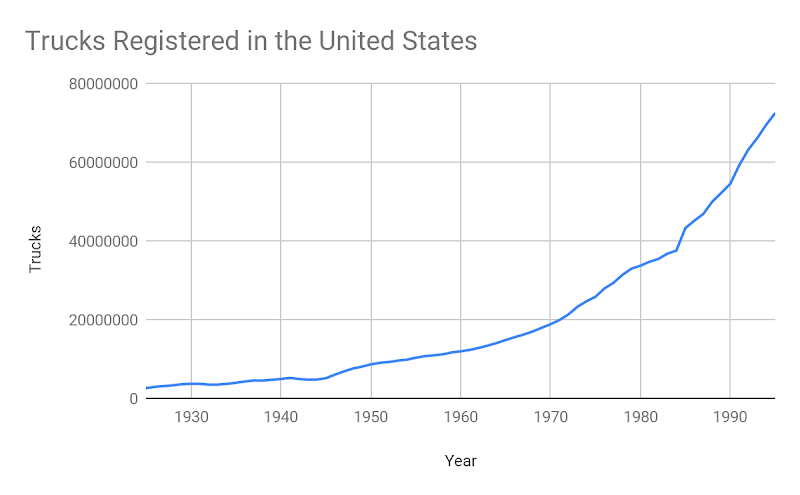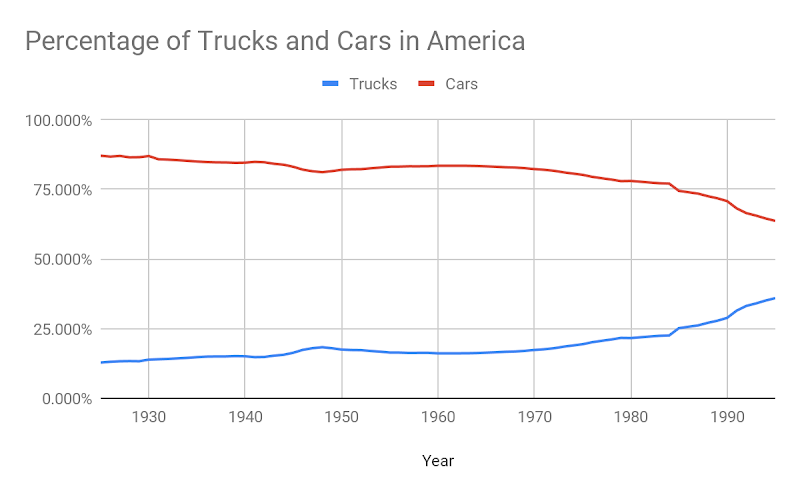Stop Buying Trucks
Estimated reading time: .
An examination of America’s recreational trucking habit, by Klaus Payne.
There is a plethora of options in the American marketplace fighting for your attention when you start shopping for trucks. The Ford F series, under its flagship F-150 light duty trucks, has been the best selling truck in the US since 1977. Dodge has been rolling out quality trucks since the Power Wagon in 1945; the Chevrolet Silverado has a stack of medals that makes Michael Phelps envious. Even Lincoln has rolled out the Mark LT, a luxury pickup, in 2005. This is without looking at the Tundras, Tacomas, Hiluxes, Rangers, Colorado, the Sierra, the Titan, or the Canyon. This is by no means an exhaustive list either – just the beginning of the options. The best option, though, won’t be found in a television commercial, or on a page in Car and Driver. The best option in the pickup market sits silently, in the background, the empty space on the lot after the rows of vehicles have run out. The best option in the pickup marketplace is not to buy a truck.
This is not an anti-truck rant. I’m not writing from a high-mileage agenda slandering gas guzzling behemoths. I love trucks, and have since I was a child driving our Ranger across the family farm. I still drive a 2013 Tundra, and love it. It is that love of the utility pickup that makes me say we need to stop buying trucks.
First, we need to accept that we are buying more trucks now than we ever have before. Truck ownership is commonplace and accepted. The rise in the popularity of the pickup is in the public record, and supported by infallible government record keeping. The graph below shows the number of trucks registered in the United States from 1925 - the year the first popular mass produced pickup, the Model T Runabout, was released - to 1995 - the last year with easily available data.

This graph shows a marked rise in pickup ownership over this time period. With the exception of the 1940-1945 war period, the number of trucks on the road has grown continuously. Of course, this cannot tell the full story. This 70 year period also saw immense population growth, the rise of mass production and consumerism, and the growth of the American auto industry into a world economic power. Of course the number of pickups registered in the United States would increase over that time period.
Unfortunately, none of these factors account for the increase in pickups on the road. Shown below are the number of trucks per capita and the proportion of pickups and cars registered on American roads in the same time span.


We can see the rampant growth of pickup ownership and registration in the US. Over 70 years, 70 million more trucks appeared on the roads. This is a growth from 12% to 35% of the cars registered in the US. Trucks per capita grew from 1 in 50 people owning trucks in 1925 to more than 1 in 4 in 1995. Experian research from 2018 shows that this trend has only continued. Full sized pickups represent the largest portion of automobiles in 48 of 50 states (of the two states not dominated by full size pickups, one is dominated by midrange standard cars and the other by small pickup trucks.) The pickup is the plurality on the American roadways. The unstoppable growth in truck popularity can not be argued.
To understand why the pickup has blossomed in America, we need to agree on the role of the pickup. The pickup is a utility vehicle first and foremost. Pickups are built with tougher suspension for heavy loads, higher clearance for off-road and rough terrain use, tow packages, higher torque and lower speeds, four wheel drive, plus the quintessential pickup attribute - the bed. These are answers to work demands. There is a reason the pickup is a staple of the blue collar lifestyle. With this in mind, we see that that pickup is first and foremost a tool. However, its rise in popularity is not a response to an increased need for this tool.
The American economy has dramatically reshaped itself since 1925 and the release of the Model-T Runabout. In the late 40s and 50s, the US was a manufacturing titan. Times have changed - the Green Revolution has reduced the number of farmers; manufacturing has largely moved overseas, construction has decreased, and mining is in its death throes. The US became what is considered a tertiary economy. Basically, this means that the economy is dominated by services (the tertiary sector) rather than material extraction or material processing/manufacturing (the primary and secondary sectors.) This is a good thing; a tertiary dominated economy is the hallmark of a highly developed nation with a high national income. However, the pickup is definitely a tool of the primary and secondary sectors. It is a tool designed for farming, logging, construction, mining, and similar fields. As these fields shrink in the American economy, the need for pickups on the American roadways should shrink as well. Instead, their presence has only grown.
The trend to be addressed is, if less trucks are needed, more trucks must be wanted. We, as a country, need to stop buying trucks because we want to. I’d never tell someone not to buy a truck if it’s needed, but the data shows that the US is buying far more trucks than are justified. We are clogging our national arteries with oversized vehicles that are never used to their potential.
This casual truck use is not limited to truck sales – it also affects truck design. As more and more trucks are purchased for non-utility purposes, consumer demand has led to new trends in truck design. The Dodge Power Wagon in 1945 featured an 8 foot bed as standard. The reasons are obvious. It’s a bed that fits building materials and the standard 4x8 sheet. It is long enough for the bucket on a front end loader to empty into. Above all else, it is a purpose built bed whose dimensions are driven by its use. Later, the long-bed and short-bed designations appeared. Now, as pickup cabs have developed more and more options (standard cab, extended cab, Super Cab, Access Cab, King Cab, double cab, quad cab, crew cab, super crew, crew max, mega cab, and I can only assume hyper cab and ludicrous cab are coming in the 2020 model year), the bed lengths vary to fit them. The 8 foot bed can still be found, but bed lengths now range from 8 to 5.5 feet. In fact, compact trucks are available with beds as short as 5 feet. The Subaru Baja (a unibody pickup, unique in its own right) boasts a bed of 41 inches - only three and a half feet.
These new trucks, defined by larger and larger cabs and smaller and smaller beds, clearly answer a new consumer demand. The expanding cabs and shrinking beds show a shifting priority in the truck’s cargo. The new modern truck fits a family, not a sheet of plywood. Other baubles have also been added to the truck. Vehicles formerly groomed for horsepower and rugged design now boast heated seats, cooled seats, heated steering wheels, and deluxe stereos. The trucks on America’s roads no longer answer a utility; they instead, answer convenience at best and appearance at worst.
The pickup is an American icon. There is no doubting the cultural appeal to a well worn truck parked next to your home. However, sentimentality and a pervasive advertising message is not enough reason to drive one. For all my love of the pickup, I acknowledge their shortcomings. Seventy dollars to fill up the tank. Anywhere from ten to twenty miles per gallon. They barely squeeze into parking spaces and garages. The initial cost of trucks is skyrocketing as well; you’d be lucky to escape for less than forty thousand and can easily pick out a truck worth seventy thousand or more.
So, I ask anyone shopping for a truck to stop and ask themselves these questions before purchasing a truck. Do you need a truck, or do you want a truck? Are you shopping for a tool, or an accessory? I think many of you will find hesitation or easy “no”s when answering these questions. If you found yourself pausing, or wondered which category you fell into as you read this article, consider the unadvertised option. Save the cash, the roads, the traffic, and the pickup’s pedigree as a utility vehicle. Stop buying trucks.